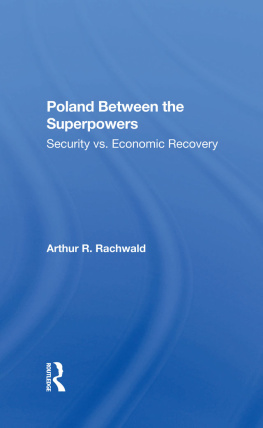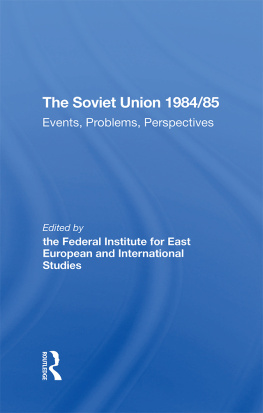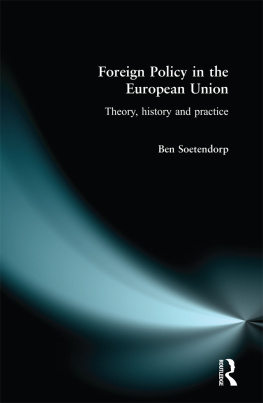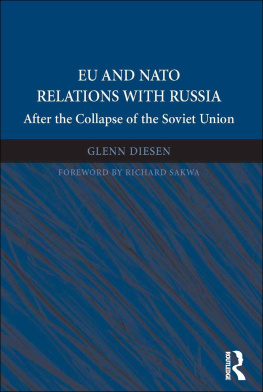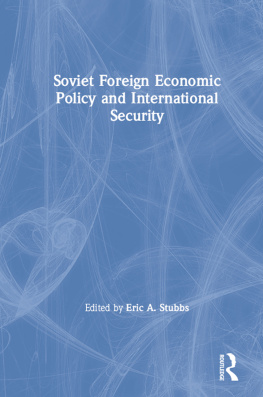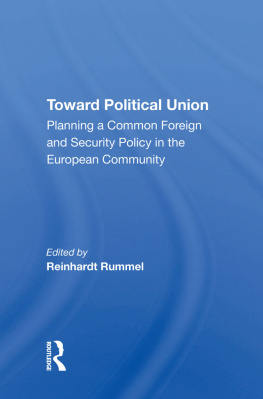Poland Between the Superpowers
Westview Replica Editions
The concept of Westview Replica Editions is a response to the continuing crisis in academic and informational publishing. Library budgets for books have been severely curtailed. Ever larger portions of general library budgets are being diverted from the purchase of books and used for data banks, computers, micromedia, and other methods of information retrieval. Interlibrary loan structures further reduce the edition sizes required to satisfy the needs of the scholarly community. Economic pressures on the university presses and the few private scholarly publishing companies have severely limited the capacity of the industry to properly serve the academic and research communities. As a result, many manuscripts dealing with important subjects, often representing the highest level of scholarship, are no longer economically viable publishing projects--or, if accepted for publication, are typically subject to lead times ranging from one to three years.
Westview Replica Editions are our practical solution to the problem. We accept a manuscript in camera-ready form, typed according to our specifications, and move it immediately into the production process. As always, the selection criteria include the importance of the subject, the work's contribution to scholarship, and its insight, originality of thought, and excellence of exposition. The responsibility for editing and proofreading lies with the author or sponsoring institution. We prepare chapter headings and display pages, file for copyright, and obtain Library of Congress Cataloging in Publication Data. A detailed manual contains simple instructions for preparing the final typescript, and our editorial staff is always available to answer questions.
The end result is a book printed on acid-free paper and bound in sturdy library-quality soft covers. We manufacture these books ourselves using equipment that does not require a lengthy make-ready process and that allows us to publish first editions of 300 to 600 copies and to reprint even smaller quantities as needed. Thus, we can produce Replica Editions quickly and can keep even very specialized books in print as long as there is a demand for them.
About the Book and Author
Poland Between the Superpowers: Security vs. Economic Recovery Arthur R. Rachwald
This book examines the foreign and domestic policies of Poland since World War II in light of the country's relations with the Soviet Union and the United States. Dr. Rachwald focuses on three salient goals of Polish foreign policy: security, guaranteed both by alliance with the Soviet Union and by support for the idea of European collective security; territorial integrity, evidenced by Poland's effort to obtain unconditional, international recognition of its western border (the Qder-Neisse line) as the final legal frontier between Poland and the German states; and domestic political stability and economic contacts with the West. Dr. Rachwald argues that these goals have frequently been mutually exclusive and unequally pursued; whenever the leaders of Poland have been presented with a choice between security and prosperity, they have chosen security as the primary aim of foreign policy.
Dr. Rachwald is assistant professor of political science at the United States Naval Academy.
To Anna
Poland Between the Superpowers
Security vs. Economic Recovery
Arthur R. Rachwald
First published 1983 by Westview Press, Inc.
Published 2019 by Routledge
52 Vanderbilt Avenue, New York, NY 10017
2 Park Square, Milton Park, Abingdon, Oxon OX14 4RN
Routledge is an imprint of the Taylor & Francis Group, an informa business
Copyright 1983 Taylor & Francis
All rights reserved. No part of this book may be reprinted or reproduced or utilised in any form or by any electronic, mechanical, or other means, now known or hereafter invented, including photocopying and recording, or in any information storage or retrieval system, without permission in writing from the publishers.
Notice:
Product or corporate names may be trademarks or registered trademarks, and are used only for identification and explanation without intent to infringe.
Library of Congress Cataloging in Publication Data
Rachwald, Arthur R.
Poland between the superpowers.
(A Westview replica edition)
1. Poland--Foreign relations--1945- . 2. Poland --Politics and government--1945-1980. 3. PolandPolitics and government--1980- . I. Title.
DK4436.R3 1983 327.438 83-6758
ISBN 13: 978-0-367-28311-7 (hbk)
I would like to express my special thanks to Ms. Sandra Erb for her care and patience in preparing this manuscript for publication.
Links between the international environment and domestic policies permeate the histories of all nations, but this interdependence appears particularly strong in the history of Poland. The country is a transition state where several political and cultural currents intersect. The area inhabited by the Polish people, the plains located between the Baltic Sea in the north and the Carpathian mountains in the south, provides a wide corridor between two distinct segments of Europe, and opens Poland to strong influence from both sides. Poland has natural borders in neither the east nor the west, and for security must rely on her own military strength and the support of her allies. This openness on two sides has involved Poland in relationships with nations so distant as France, the Mongolian Empire, Sweden and Turkey.
The cultural development of Poland has been shaped by the Christian ideas channeled by the Roman Catholic church. The church has molded the Polish nation according to the Western patterns transmitted for a thousand years to all layers of the society. Poland has experienced all major cultural and political trends of Western Europe, including the Renaissance, Reformation, Enlightenment, Romanticism and Positivism, constitutionalism and democracy. The popularization of these models, however, was frequently delayed for several decades, and their substance adjusted to compromise for the Slavic origin of the Poles and the influence from the East. Poland, in consequence, belongs to the peripheries of Western civilization.
The independent Polish state emerged in the second half of the tenth century, and its first choice was between East and West, that is, between the eastern or western form of Christianity. The decision to incorporate Poland into the Western world was a result of proximity to the Holy Roman Empire, and in 966, the Piast dynasty received baptism according to the Roman rite. Poland became the Christiana republica , and was placed under the pontifical protection of the Apostolic Sea. The conversion was a political step to establish ideological harmony between Poland and her powerful neighbor in the west.
The essentially Teutonic Holy Roman Empire dominated the political sense of Poland. With few exceptions, the nation was unable to match Germany and had to accept sovereignty of the Empire. The country was also weakened by internal fragmentation into rival principalities, which facilitated German conquest and colonization. This process culminated in 1266, when the German Order of St. Mary, the Teutonic Knights, were invited to settle near the mouth of the Vistula. When in the fourteenth century Poland became united again, the country lost half of its original territory, including access to the Baltic Sea.

